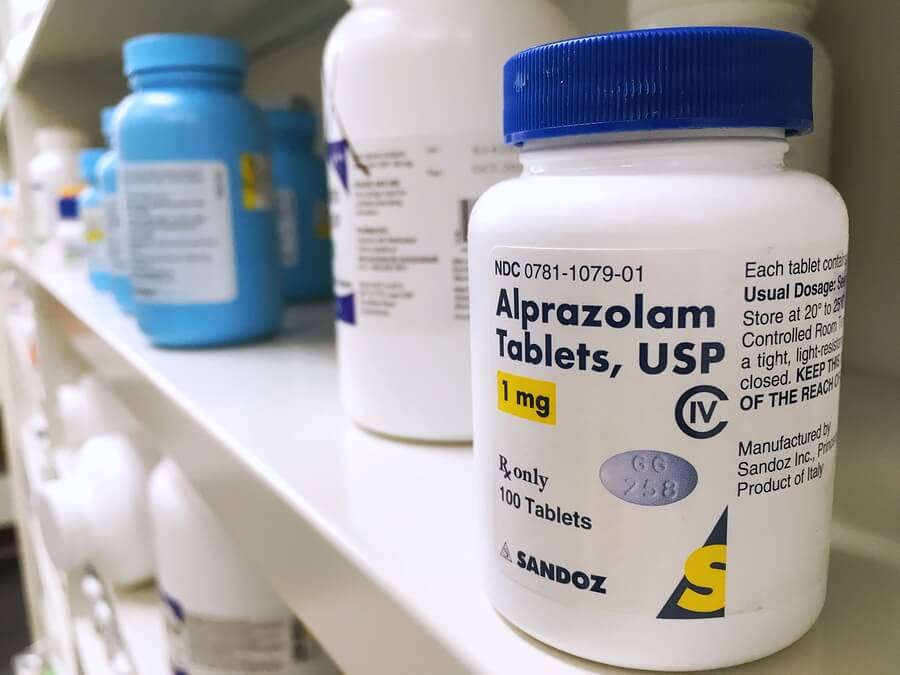
What Is Post-Acute Withdrawal Syndrome (PAWS)? – Drug or alcohol withdrawal syndrome is hallmarked by effects that occur when a person dependent on a substance suddenly discontinues use. Both illicit and prescription drugs can produce withdrawal symptoms, and they may persist anywhere from a few days to a couple of weeks. Physicians usually work with their patients to control withdrawal symptoms from prescription drugs, such as benzodiazepines. However, those who are suffering from addiction are likely to experience intense withdrawal effects if they try to quit using the drug “cold turkey” or are forced into cessation due to the drug becoming inaccessible to them.
Post-Acute-Withdrawal Syndrome (PAWS)
Although withdrawal symptoms can be highly unpleasant, most usually subside by about two weeks, especially when overseen by medical staff during the detox process. However, some substance abuse can cause prolonged withdrawal effects that persist for months. People who use an excessive amount of a psychoactive substance for an extended period are more likely to encounter this condition, also referred to as post-acute withdrawal syndrome or PAWS. PAWS is a term that describes a combination of ongoing withdrawal symptoms, which are primarily psychological, emotional, and mood-related. These effects can continue long after acute (short-term) withdrawal symptoms have abated. Although post-acute withdrawal syndrome rarely includes aches and pains, nausea, cramping, headaches, or other physical symptoms typical of withdrawal, it can be just as severe as short-term withdrawal. It may ultimately leave a person at an increased risk of relapse, as they may return to substance use as an attempt to relieve their discomfort.
About PAWS
People who suffer from PAWS can feel like they are experiencing a rollercoaster of symptoms that wax and wane without warning. Each episode of PAWS can persist for several days and continue to reoccur cyclically for up a year. These symptoms can onset after the extended use of any intoxicant, although PAWS most often occurs among those who discontinue use of the following substances:
Alcohol PAWS symptoms were first identified for alcohol use disorder in the 1990s. Suddenly stopping alcohol use can be dangerous and even life-threatening, because it can cause a serious condition known as delirium tremens that includes seizures and psychosis. Furthermore, it can also increase the likelihood of PAWS occurring.
Antidepressants Although very few people use these medications recreationally since they do not induce an intense or rapid high, stopping them abruptly can significantly alter levels of serotonin and other neurotransmitters in the brain. Since people who experience depression are those who are usually prescribed antidepressants, acute withdrawal will feel like severe depression and/or anxiety that unfortunately, could persist for several months.
Antipsychotics Antipsychotics bind to dopamine receptors in the brain to reduce hallucinations, delirium, and other psychiatric symptoms. When they are suspended or terminated without a tapering schedule, the person could suffer from withdrawal symptoms such as major mood swings for months.
Benzodiazepines (Benzos) Benzos are medications that benefit many people with anxiety and panic disorders, but they also have a high potential for chemical dependence and abuse. Most prescriptions for benzos do not offer coverage for more than two weeks of regular use because addiction can develop. Withdrawal symptoms tend to resemble anxiety and panic disorders, making it much more challenging to discontinue use. PAWS symptoms, such as insomnia, fatigue, and strong cravings, can last for months after chemical dependence has receded.

Marijuana Many people come to depend on marijuana use to relax and feel normal – moreover, if they stop using it, they can feel depressed, stressed out, and anxious. Among the most common withdrawal symptoms with marijuana cessation are insomnia, and without medical guidance, could last long-term and progress into PAWS.
Opioids Whether opioids are misused/abused by prescription or illicitly as in the case of heroin, the long-term exposure to these drugs can advance into PAWS if they are not weaned off properly. Moreover, individuals who experience the full severity of acute withdrawal are more likely to encounter PAWS, which includes intense cravings, exhaustion, and cognitive impairments that may not improve for a prolonged period.
Stimulants Prescription stimulants such as Adderall and illicit drugs such as cocaine can contribute to PAWS if withdrawal is not managed appropriately. A person using stimulants may experience acute adverse side effects, including paranoia, twitching, tremors, and aggressiveness. However, other symptoms, such as extreme fatigue, severe depression, and physical weakness, can be more challenging to manage.
PAWS Symptoms
Symptoms of PAWS may vary somewhat according to each drug and individual, but common symptoms may include the following:
- Hostility and aggression
- Anxiety, panic, and fear
- Agitation
- Mood swings
- Depression
- Exhaustion and fatigue
- Insomnia
- Difficulty concentrating
- Loss of libido
- Anhedonia
- Memory impairments
- Hypersensitivity to stress
Causes of PAWS: Theories
PAWS is a complex syndrome with no single, precise cause. Psychologists and doctors do not completely agree on the exact reasons for the syndrome, but some suggest that stress response and changes to specific regions of the brain during addiction may contribute to the development of PAWS. Stress response, however, can be influenced by any number of reasons. Theories about the causes of PAWS include the following:
Homeostatic Regulation A person’s physical dependence on a substance leads to brain chemistry modifications over time, and when the system is “deprived” of the substance’s presence that triggers neurochemicals to release, it can no longer reach a balance on its own. It can take an extended period for the brain to reach equilibrium fully, and this delay can result in moodiness, fatigue, cravings, and other psychological symptoms.
Physiological Adaption Other areas in the body may be accustomed to the drugs to manage functions such as digestion or hormones, and withdrawal effects tend to reflect this. For example, nausea, abdominal cramps, and diarrhea are typical opioid withdrawal symptoms, but for some these effects can take two weeks or more to return to normal.
Stress It can be psychologically taxing to quit using an intoxicating substance, especially for those who attempt to do it cold turkey or without medical supervision. This stress can contribute to relapse, or otherwise result in the continued presence of withdrawal effects as the individual tries to reestablish a life balance without the use of drugs or alcohol.

Habit One of the main purposes of rehab is to help people change their behaviors and responses regarding drugs or alcohol. Recovering heroin addicts, for example, may have fond memories of the ritual of cooking and injecting drugs, while others who overcome alcohol use disorder bemoan the loss of certain enjoyable social situations. Returning to a habit associated with substance use frequently results in relapse, but the loss of that habit or tradition can also enhance stressful psychological symptoms such as depression, cravings, or anxiety, eventually leading to PAWS.
Treatment for PAWS
Because the effects of PAWS symptoms are mostly emotional and psychological, constant support from therapists and counselors early in recovery is vital to reducing the intensity of this experience. Here are some steps medical and addiction health professionals may take to help patients overcome long-term withdrawal symptoms:
- Offer education about the withdrawal process and what to expect during recovery
- Encourage celebration with every completed step in the process
- Encourage patience
- Find natural methods to help with sleep disturbances, such as melatonin
- Prescribe exercise and a healthy diet
- Evaluate potential co-occurring disorders, which may emerge or re-emerge during recovery
- Encourage participation in peer support groups
- Help to manage impulse control
- Take self-reported symptoms seriously
Also, some medications may help with withdrawal from certain drugs. For example, naltrexone is a prescription medication that is approved to reduce the cravings associated with recovery from opioid or alcohol dependence. Antidepressants may help some people to stabilize their mood in those trying to overcome addiction to stimulants or psychoactive drugs. The risk of experiencing PAWS can also be lessened by undergoing a professional detox, enrolling in an intensive addiction rehab program, and receiving continual support well after initial addiction treatment has been fully completed. If you or someone you love is addicted to drug or alcohol, please contact us as soon as possible to discuss treatment options. Discover how we help people achieve abstinence, avoid relapse, and begin to experience the healthy and fulfilling lives they deserve!